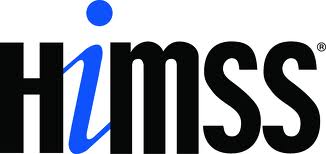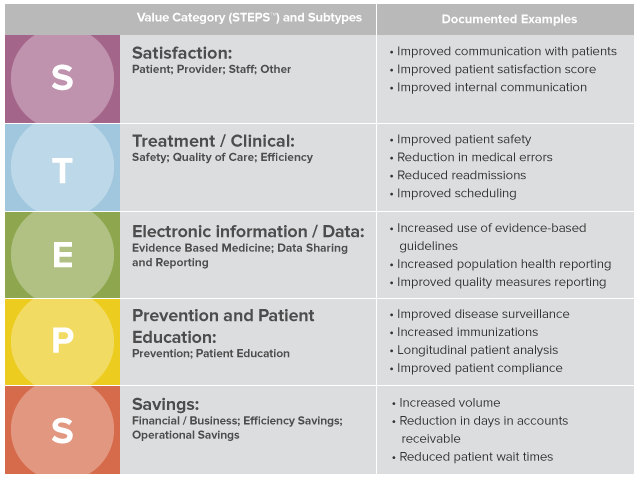 As the health sector strives to improve health and healthcare through the optimal use of IT, measuring technology’s impact and value to patients and caregivers becomes critical. Recognizing the need for a consistent way to understand, evaluate and communicate the real-world impact of health IT, HIMSS introduces the Health IT Value Suite — a comprehensive knowledge repository that classifies, quantifies and articulates the clinical, financial and business impact of health IT investments.
As the health sector strives to improve health and healthcare through the optimal use of IT, measuring technology’s impact and value to patients and caregivers becomes critical. Recognizing the need for a consistent way to understand, evaluate and communicate the real-world impact of health IT, HIMSS introduces the Health IT Value Suite — a comprehensive knowledge repository that classifies, quantifies and articulates the clinical, financial and business impact of health IT investments.
“For the past decade, providers, payers, and other healthcare stakeholders have moved rapidly to implement strategic IT solutions across the organization,” said Carla Smith MA, CNM, FHIMSS, Executive Vice President of HIMSS, during a press conference held today at the National Press Club in Washington, D.C. “The end game for all players across the healthcare landscape is better and safer care, with more accountability, while keeping costs in check. These are critical goals that impact every American.
“Adding to these high stakes,” said Smith, “is the EHR incentive program from the federal government’s American Recovery and Reinvestment Act, as well as significant private sector investments. As healthcare providers continue to implement IT solutions, it is increasingly critical to be able to evaluate technology’s real impact. Pinpointing the clinical and financial impact of health IT investments is complex. That’s why we’re introducing the Health IT Value Suite.”
The Health IT Value Suite creates a taxonomy and framework to quantify and discuss the impact of IT in health settings. Further, it offers relevant and credible examples that help stakeholders—from providers to policymakers to payers to influencers—evaluate the success of their information technology investments with an emphasis on examining and improving performance across numerous clinical, business and financial factors. Using the Health IT Value Suite, stakeholders and organizations can continue to advance their objectives with confidence, and realize maximum value by providing high-quality, safe, and cost-effective care.
Said Smith, “The value of health IT is demonstrated in many ways; some may be unique to an organization, while others may be highly adoptable and scalable. HIMSS created the Health IT Value Suite to organize and create a common vocabulary to identify, classify and discuss the many known examples of health IT value, to create a comprehensive library of case studies from which we can research impact, and to educate all on the findings.”
With its robust library of patient care-focused data organized by levels of evidence, the Health IT Value Suite offers stakeholders relevant and credible answers to questions such as:
- In a medical practice, how has health IT been used by physicians to improve patient care?
- How does health IT benefit a patient’s experience in a care encounter?
- How can IT help hospitals, practices, clinics and other points of care reduce costs while maintaining or improving the quality and safety of patient care?
HIMSS has collected hundreds of provider case studies demonstrating the value of health IT, creating a “library” of case studies that now serves as the foremost collection of data/evidence of health IT value. Using this evidence, HIMSS has identified ways in which value can be realized, and has grouped them into five categories, called “Health IT Value STEPS™.”
The Health IT Value Suite fully realizes HIMSS’ decades of research and development, and real-world knowledge to help stakeholders measurably transform care through IT, and connects users with actionable resources including the Health IT Value STEPS™ model, detailed case studies, thought leadership, education tools, peer mentorship, and much more.
Go to www.himss.org/ValueSuite to access the HIMSS Health IT Value Suite, an executive summary of this new initiative, and learn how to submit case studies for review. As a living library, it will be continually updated with additional data and increased functionality, with several major enhancements scheduled over the next few months.

